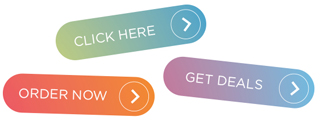A little while ago a client came to our firm with an interest in producing an e-newsletter. The client offered an example of an “e-newsletter” he liked. It turned out the example wasn’t a newsletter at all. It was an e-blast.
Oftentimes e-newsletters and e-blasts are lumped into the same category because they both are delivered by email, but in reality each serves a very different purpose. While the method of delivery may be the same, the content, structure and desired outcome is not.
From the outset of any marketing piece, it’s important to clearly define the goal. Each piece has a purpose and must be designed to do the job it’s intended to do. Because these two items serve different purposes, it might be wise to do both e-blasts and e-newsletters for your company. They are both low-cost, and doing both offers variety in communication and content, and increases contact frequency.

NEWSLETTERS:
Think of newsletters as a way of building a relationship with your clients and customers.
Newsletters are an opportunity to show your level of expertise by offering articles that would be of help or interest to your customer base – articles that show you to have knowledge and insight. Newsletters allow you to feature “good news” stories like a recent success story at your company, and they allow you to get personal by doing things like a short feature on an employee who has had a recent accomplishment or promotion. Newsletters are exactly what the name implies… they feature newsworthy information about your company and industry. They are not a forum for sales.
The purpose of a newsletter:
- Establish friendly communication with your customer base
- Position your company as an expert by providing useful and insightful articles/tips/product info/product reviews
- Connect with customers in a more meaningful way by featuring your staff as writers of the articles or in stories about staff members
- Provide a forum to present success stories of past customers or projects
- Create an added point of contact (touch point) with customers, to stay “Top of Mind”
- Provide newsworthy information that is helpful and informative
- Build and strengthen your customer relationship

Benefits of newsletters:
- Customers feel you care and are a partner in their success when you share tips and stories that can help them achieve success in their business
- You are portrayed as an expert when you write or share articles that offer insight and knowledge
- This mail is friendly and not pushing a sale so it is perceived as trustworthy
- Added customer contact
- Credibility
- Newsletters have a longer shelf life than advertising and can be posted on your website if someone wants to look at past or current issues. You can double up on the use of articles by using newsletter articles in your blog posts as well
E-BLASTS:
An e-blast is most often used for one of two things – advertisements for sales, and informing people about an upcoming event. Unlike newsletters, e-blasts are looking for ACTION. Most e-blasts will have one or more buttons to click on to do things like “Register for an event”, “Shop”, or “Buy”. They don’t include articles – in fact, they are short on text and are built around Headings, Photos, Price Points, and Action Buttons.
The purpose of an e-blast:
- Inform customers of sales, product availability, new products, upcoming events
- Communicate with customers on an as-needed frequency. E-blasts can be sent more frequently than newsletters because they have much less content. The message can be considered at a glance
- Provide added touch points, to help stay “Top of Mind”
- Deliver “At the moment” messaging. Unlike newsletters, e-blasts have a short shelf life and are designed to promote in the short term
- Create action! E-blasts typically involve a desired action, like “click here, for more info/to shop/to buy/to register”, etc
Benefits of e-blasts:
- Immediate reaction to message (sales boost)
- Measurable results
- Quick and easy to put together
- Added customer contact
No matter what type of marketing piece you are producing, it is important to consider the purpose of the piece, and how it fits into your brand and overall marketing plan. Each piece offers an opportunity to strengthen brand awareness and perception, and gives you a variety of ways to connect with your customers.
